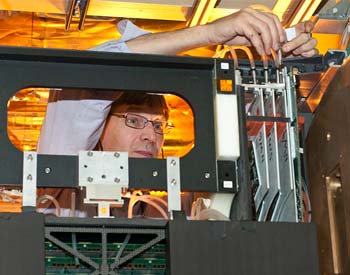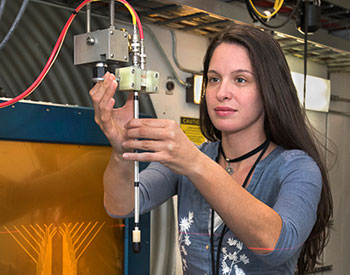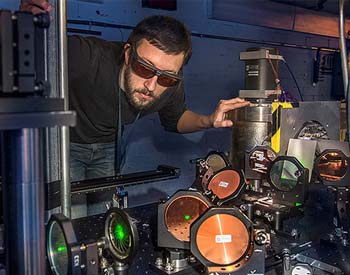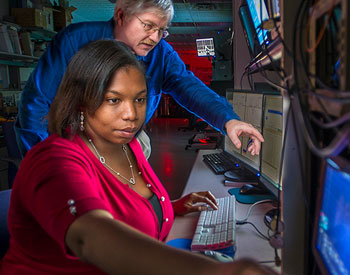Brookhaven National Laboratory is home to a suite of particle accelerators and sophisticated accelerator-based test facilities—tools for innovation and discovery in fields as diverse as medicine, materials science, electronics production, and national security. We encourage academic and industrial partners to collaborate with our scientists. Draw on our 70+ years of expertise to develop and test new concepts, techniques, and technologies while pursuing your own basic and applied research or industrial goals. And if you're in the business of developing skilled professionals, accelerator facilities are an excellent training ground for the next generation of technology experts.
Our accelerator capabilities and technology experts are here to support you. Contact Us
Accelerators are tools used to investigate the physical world and the fundamental processes that govern it.
Accelerators are used to address questions spanning a broad range of topics from materials science to medical imaging to space exploration.
Our experts support a broad research program in accelerator-based science. See how they can help you.
Brookhaven Lab is an ideal location for burgeoning scientists and engineers to study and train.
What's an accelerator?
A particle accelerator is a machine that accelerates elementary particles, such as electrons or protons, to very high energies. On a basic level, particle accelerators produce beams of charged particles that can be used for a variety of research purposes. There are two basic types of particle accelerators: linear accelerators and circular accelerators. Linear accelerators propel particles along a linear, or straight, beam line. Circular accelerators propel particles around a circular track. Linear accelerators are used for fixed-target experiments, whereas circular accelerators can be used for both colliding beam and fixed target experiments.
How accelerators contribute to science
Accelerators are essential tools of discovery for physics and for sciences that use x-rays and neutrons, a type of neutral subatomic particle. Particle physics, also called high-energy physics, is a field that asks basic questions about the universe. With particle accelerators as their primary tools, particle physicists have achieved a profound understanding of the fundamental particles and physical laws that govern matter and energy.
'Light sources'—circular accelerators producing photons, the subatomic particle responsible for electromagnetic radiation—have been used to make dramatic advances that cut across many fields of research. Today, there are now about 10,000 scientists in the United States using x-ray beams for research in physics and chemistry, biology and medicine, Earth sciences, and many more aspects of materials science.
Discovery
Particle accelerators are essential tools of discovery for particle and nuclear physics and for sciences that use x-rays and neutrons.
Medicine
Tens of millions of patients receive accelerator-based diagnoses and therapy each year in hospitals and clinics around the world.
Industry
Worldwide, hundreds of industrial processes use accelerators—from the manufacturing of computer chips to the cross-linking of plastic for shrink wrap.
Security
Accelerators play an important role in national security, including cargo inspection, stockpile stewardship, and materials characterization.
Brookhaven Lab Accelerator Facilities

Relativistic Heavy Ion Collider
Studies what the universe may have looked like moments after its creation

National Synchrotron Light Source II
One of the most advanced facilities in the world for generating intense beams of x-ray, ultraviolet, and infrared light

Brookhaven Linac Isotope Producer
Produces unique radioisotopes for medical, environmental, and industrial applications

NASA Space Radiation Laboratory
Simulates space radiation using accelerated heavy ions to study biological effects

Tandem Van de Graaff
Twin accelerators capable of providing researchers with beams of more than 40 different ion species

Accelerator Test Facility
A facility dedicated to exploring new methods of accelerating particles to high energies

Accelerator Center for Energy Research
Studies chemical reactions and other phenomena using high-energy electrons and gamma rays

Superconducting Magnet Division
Builds magnets with superconducting technology for use in particle accelerators and experimental facilities

Instrumentation Department
Develops state-of-the-art instrumentation for basic research and applications in national security and industry







